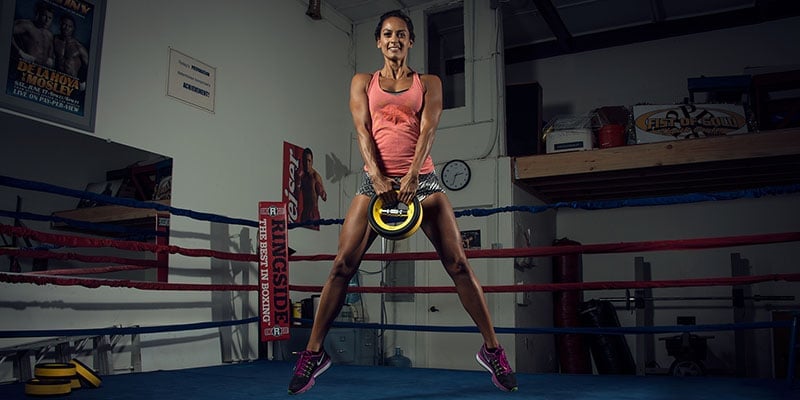Have you ever wondered why your blood sugar falls during certain types of exercise whilst increasing during and types of exercise? Or why you sometimes get high blood sugars after exercise?
If you’re curious about the scientific explanation of how exercise can raise blood sugar, read on.

I rarely come across scientific studies that explore how exercise affects blood sugar in people living with type 1 diabetes, so when I recently got my hands on just such a research paper, I dug in with great interest (they specified type 1 diabetes, but I would think that the results are applicable to anybody using insulin).
Well actually, Google and I dug in. This research paper is heavy reading. You know those scientific papers where you feel like you need an advanced degree (plus a whole lot of Googling) just to understand the introduction? This is one of them.
The paper is titled “Effect of intermittent high-intensity compared with continuous moderate exercise on glucose production and utilization in individuals with type 1 diabetes”, and is written by a team of scientists from Australia. It was published in the American Journal of Physiology – Endocrinology and Metabolism in 2007 (not exactly new research, but peer-reviewed research nonetheless, which means it’s legit).
I thought that the subject was relevant and interesting enough to spend the time reading and understanding it. So, since I’ve done the heavy reading, let me share what I’ve learned with you.
Exercise and blood sugar impact
So why do some types of exercise make our blood sugar drop like crazy while others make it increase or hardly have any impact? I know from my own experience that I really have to watch my blood sugars if I do steady-state cardio, while an interval training session will have little impact or even make my blood sugars go up.
It turns out that the main reason why interval training won’t make your sugars drop as much as steady-state cardio comes down to two factors.
- Increase in glucose production
- Glucose utilization
Both of these factors are affected by exercise, regardless of the type of exercise you do. However, the scientists found that after 15 minutes, there was a statistically significant difference in the two factors depending on whether the test subjects did interval training or steady-state cardio.
They found an overall higher production of glucose, both during and up to 2 hours post-exercise in the test subjects that did interval training when compared to those doing steady-state cardio. Glucose utilization was also higher for the interval training group, but it never caught up with the glucose production.
This means that interval training has less of an impact on blood sugars (despite the interval training group putting in more overall work) than steady state cardiovascular training because your body is producing glucose as fast or faster than you can use it.
The scientists don’t know exactly why we see the greater increase in glucose production for interval training, but they theorized that it might be due to muscle glucagon breakdown.
Another finding was that cortisol (the stress hormone) didn’t increase more with interval training. That’s a really positive finding since increased cortisol isn’t something we generally strive for due to the many negative side effects such as weight gain, impaired immune function, and gastrointestinal problems.

How to implement the research findings
Aside from me finding this super fascinating, what can we do with this information?
I think that this is a great piece of knowledge to have for trained athletes, those who are just starting out, and for parents managing their kid’s diabetes. It can serve as a guide when determining the amount of insulin and carbohydrates to safely administer prior to and post an activity.
The scientists compared interval training to sports like basketball and soccer where you have intense bursts of activity. I would add newer sports such as CrossFit, HIIT (high-intensity interval training) and HIT (high-intensity training). It could also be boot camps, spinning classes, or if you just do a lot of cardiovascular interval training and heavy resistance training.
Armed with this scientific knowledge (and a lot of experience), I know that I don’t need to reduce my insulin as much before and after an interval training or a resistance training session (I may even need a little extra insulin(!)), while I will need to make reductions if I do 40-60 minutes of steady state cardio.
For me, steady state cardio can be a long walk, a bike ride, or walking on an incline, Stairmaster or elliptical. With all of these activities, I’ll see an almost instant drop in blood sugars. However, the improved glucose utilization wears off pretty quickly after I stop exercising, so I know to lower my insulin prior to steady state cardio but not after.
To summarize:
- Exercise impacts BOTH glucose production and utilization
- When doing interval training, increased glucose production outpaces your increased glucose utilization
- When doing steady-state cardio, glucose utilization dominates production
- Because of this, your blood sugar may rise during and after high-intensity interval exercise, while it most likely will drop during steady-state cardio
You can read the full scientific paper here: Guelfi KJ, Ratnam N, Smythe GA, Jones TW, Fournier PA: “Effect of intermittent high-intensity compared with continuous moderate exercise on glucose production and utilization in individuals with type 1 diabetes”: Am J Physiol Endocrinol Metab. 2007 Mar;292(3):E865-70.




Marcus B
Hi – thanks for posting this article, i found it very interesting and actually it aligns with what i have found elsewhere on this topic. I think, though, that there is a scenario not covered which is more in the endurance space.
I am a runner and have had T1D for nearly 20 years. i recently, this year, changed my approach to my run training operating more in Z2 which is firmly aerobic. There are numerous benefits to this however when i do find is that while my sugars remain stable through the session as soon as i eat something afterwards i get a response which is more akin to having eaten double the carbs i actually have.
For example this morning i headed out the door with a blood sugar of 5.9mmol and having just had a glass of juice (and water). I ran for 90 minutes in low Z2 range (i’m 49 and ran 9.25 miles at a 124bpm avg.). when i checked my sugars on getting in they were 5.2mmol and i ate nothing on the run. i had a breakfast of weetabix with some fruit and calculated 50g of carbs. It’s now an hour after eating and my sugars have gone to 13mmol. They will remain high through an hour or so more and then plummet.
If i train in higher zones, and more anaerobically, then i get the opposite problem and the one you describe where my sugars come down and i am fighting hypos the whole time.
I know this is complicated but i wondered if you had seen the problem i outline in the reading you did?
To resolve it there doesn’t seem to be anything i can do other than wait for the insulin to do it’s job and catch up… if i correct or stack insulin it doesn’t seem to have an affect for a while then all at once it does.
It’s not easy eh – thanks again..
Christel Oerum
You’re right, it’s not easy. I don’t have a good answer to your question. I wonder if some of that increase could be due to you taking in carbs before your run. Since your digestion can slow down during the run you might be hit with some of those carbs once your run is over.
Since you say your blood sugar comes down, it doesn’t sound like it’s a dose issue but rather a timing issue. I sometimes take an insulin shot 30 min before I know I’ll be done with my workout, but that’s obviously more challenging if you’re out running. You could play around with a pre-bolus once you get home though…